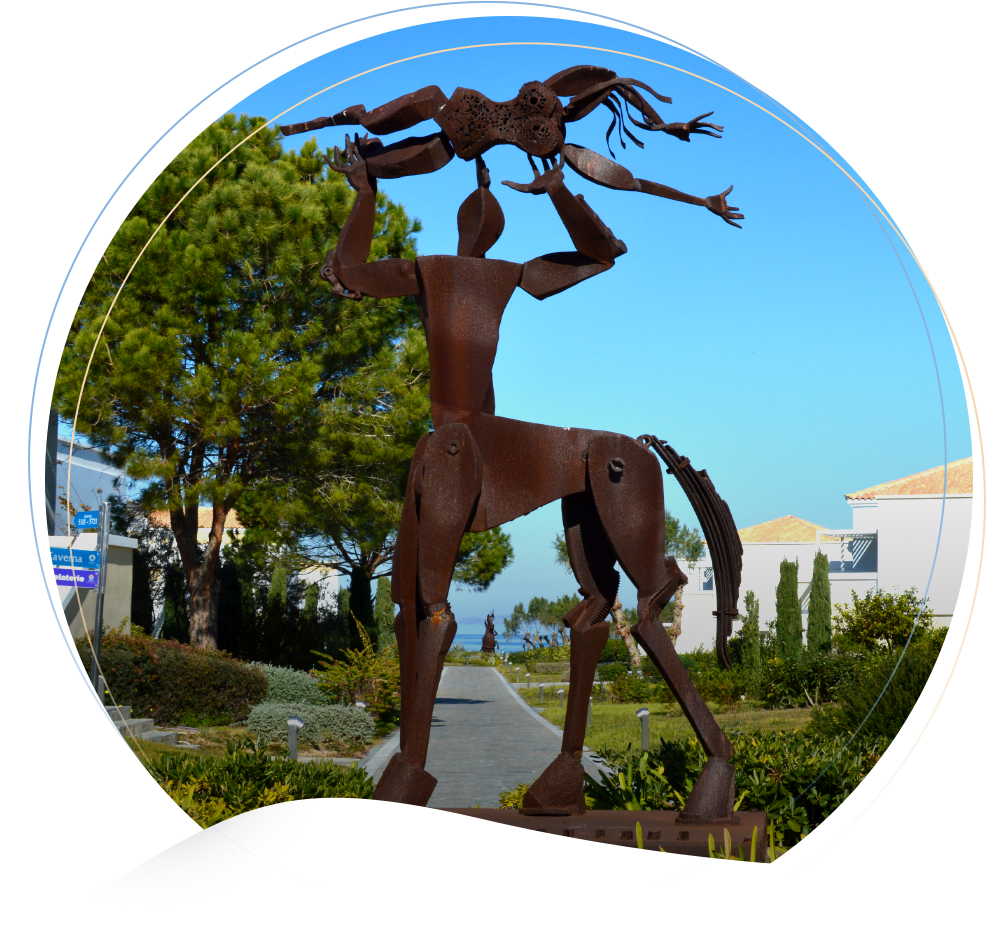In Greek mythology, centaurs were creatures that were half man and half horse who lived mainly around Mount Pelion in Thessaly, a region of northeastern Greece. They had the head, neck, chest, and arms of a man and the body and legs of a horse. With the exception of the wise and kind Chiron, most centaurs were depicted as bestial, drunken, lecherous bullies strewing chaos and strife wherever they went. They were also followers of Dionysus, the God of Wine.
The various battles centaurs were engaged in, epitomize the struggle between civilization and barbarism. One of the most famous stories of centaur misbehavior is at the wedding of the Lapith king Perithoos, best friend of Theseus. Perithoos invites the centaurs to the wedding, but after consuming alcohol, they become feral, attempting to carry off the bride and the other women. A huge battle ensued, one that was quite popular in art—the Parthenon metopes (large marble friezes on the outside of the building) take this battle as their subject. Such depictions with centaurs became so popular that they actually had their own name—"Centauromachies” (literally, centaur fights).
Chiron who was the most well known and most civilized centaur was a tutor and advisor to heroes like Hercules, Achilles and Jason. He was the son of Philyra and Cronus. Chiron was responsible for Achilles adolescent education. He was known for not indulging in drinking, having superior knowledge and a different descent than the other centaurs.
Centaurs may have a basis in reality; there was a tradition in Thessaly of men hunting bulls on horseback and the very word centaur may have originally meant bull-killer. The most common theory is that the idea of centaurs came from the first reaction of a non-riding culture to come into contact with people who were mounted on horses. The myth of centaurs continued through Roman mythology.


 ALL STATUES
ALL STATUES